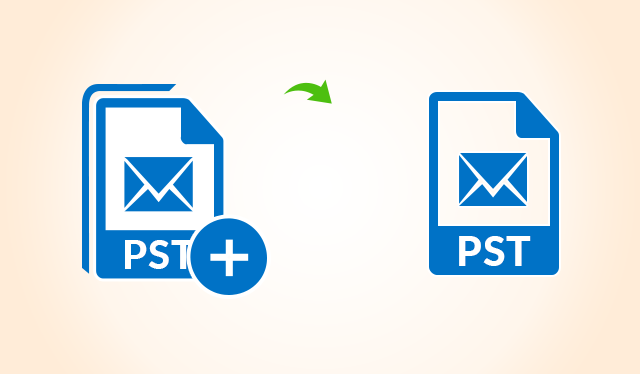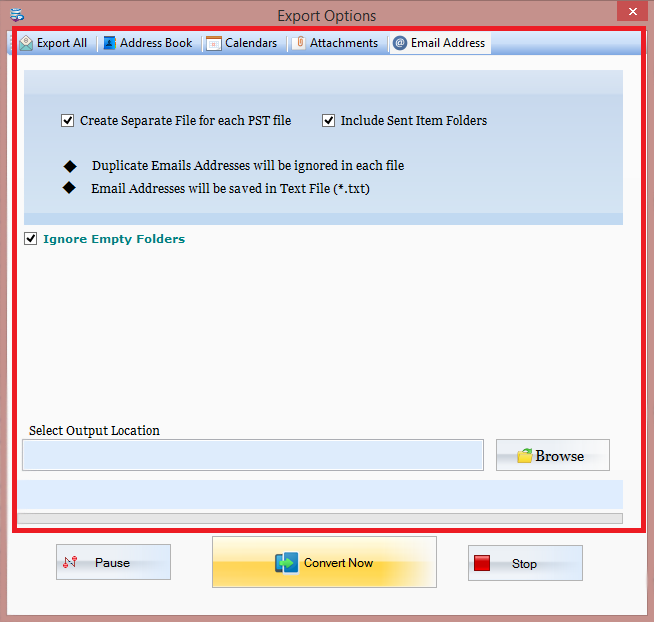
- EXPORT PST IN OUTLOOK WITH MULTIPLE ACCOUNTS HOW TO
- EXPORT PST IN OUTLOOK WITH MULTIPLE ACCOUNTS WINDOWS 7
Do not check the Enable deduplication option, unless you want the search results to be exported to a single PST file. I find the default options to be the most reasonable for a backup – each mailbox has a separate PST file, which makes recovery a bit easier if necessary.
EXPORT PST IN OUTLOOK WITH MULTIPLE ACCOUNTS HOW TO
You can also decide how to export the Exchange content.
In this window, you can choose if you want to include encrypted files.  In the window that pops up, you can see if the search has been completed and the details concerning its result. Now go back to the Content Search window, hit Refresh and choose your search. After clicking Save, the wizard will perform the search in the background. Click Save and run and you will be prompted to enter a name of the search and its description: If you want to export all mailbox data, just do not add any conditions or keywords. You can check those options by clicking the Add conditions button in the search window. message types (which can be defined in the window that opens when you click the select message types… button). keywords/phrases ( separated by logical operators: AND, OR, NEAR, NOT, etc.). Apart from the location filter, the search option gives you several filtering options:. In this window, choose Exchange email or select specific mailboxes using the Choose users, groups option. Additionally, you can enable exporting from SharePoint (again the whole database, or specific sites) and Public folders by checking the Exchange public folders option (in the Public folders section at the bottom of the window) If you want to export data from all mailboxes, select Specific locations and Modify. Mind that ticking All locations will cause the tool to search through your SharePoint online and Public Folders database, which might take a long while. The search window lets you specify which mailbox data you wish to export. However, the way it functions is similar. This window has experienced a few layout updates since the introduction of eDiscovery searches. The issue with permissions might also result in the lack of the export/download option later on. 24 hours after you set the permissions (or less, in my case it happens almost instantly) the tool should work just fine.
In the window that pops up, you can see if the search has been completed and the details concerning its result. Now go back to the Content Search window, hit Refresh and choose your search. After clicking Save, the wizard will perform the search in the background. Click Save and run and you will be prompted to enter a name of the search and its description: If you want to export all mailbox data, just do not add any conditions or keywords. You can check those options by clicking the Add conditions button in the search window. message types (which can be defined in the window that opens when you click the select message types… button). keywords/phrases ( separated by logical operators: AND, OR, NEAR, NOT, etc.). Apart from the location filter, the search option gives you several filtering options:. In this window, choose Exchange email or select specific mailboxes using the Choose users, groups option. Additionally, you can enable exporting from SharePoint (again the whole database, or specific sites) and Public folders by checking the Exchange public folders option (in the Public folders section at the bottom of the window) If you want to export data from all mailboxes, select Specific locations and Modify. Mind that ticking All locations will cause the tool to search through your SharePoint online and Public Folders database, which might take a long while. The search window lets you specify which mailbox data you wish to export. However, the way it functions is similar. This window has experienced a few layout updates since the introduction of eDiscovery searches. The issue with permissions might also result in the lack of the export/download option later on. 24 hours after you set the permissions (or less, in my case it happens almost instantly) the tool should work just fine. 
Important note: If you are missing the Content search option, it is most likely related to the eDiscovery permissions you set in the previous steps. Changes in the eDiscovery permissions might take even up to 24 hours to apply. If that is the case, make sure you add it by clicking the Edit role group button. In some cases, the Export role is missing. The role group normally has the following roles assigned: Case Management, Compliance Search, Export, Hold, Preview, Review and RMS Decrypt.
In the eDiscovery Manager role group properties window, add your account to the eDiscovery Administrator list using the Edit button and following a simple creator. This and the next step are necessary because you need to be a member of the eDiscovery Manager role group to be able to use eDiscovery features. In your Security & Compliance center, go to Permissions and edit eDiscovery Manager role group. In your Microsoft 365 admin center, expand Admin centers and click Security. After logging in to your Office 365 portal, access the Microsoft 365 admin center as shown in the below image. Steps to export Office 365 mailboxes to PST using eDiscovery The PST export comes at the end (it is performed via a ClickOnce application). Mozilla Firefox or Google Chrome works only with the ClickOnce add-in installedĪs already mentioned, this is a workaround, so most of the below steps are going to be related to setting up in-place eDiscovery. Internet Explorer 10 and later versions or Microsoft Edge. EXPORT PST IN OUTLOOK WITH MULTIPLE ACCOUNTS WINDOWS 7
32 and 64-bit versions of Windows 7 and later versions. Export Office 365 mailboxes to PST using CodeTwo Backup for Office 365. Steps to export Office 365 mailboxes to PST using eDiscovery. If you want to learn how to simplify some of the tasks in the eDiscovery with PowerShell, take a look at this article. 
Note that this solution can also be used in Exchange 2019, 20. IMPORTANT: eDiscovery is supported in all Exchange Online plans and in selected Office 365 plans. add a layer of extra protection to your Office 365 data or migrate away from Office 365, the eDiscovery mechanism is your only option, other than opening the mailboxes in Outlook and using its Import/Export functionality.

In fact, if you want to export mailboxes to PST files to e.g. The reason why you may need to use it is that Microsoft doesn’t provide any tools dedicated specifically for this purpose (like the New-Mailbo圎xportRequest cmdlet in on-premises Exchange). In this article, I am going to show you how to export Office 365 mailboxes to PST files using an Office 365’s native in-place eDiscovery mechanism as a workaround.








 0 kommentar(er)
0 kommentar(er)
